My visit to Colour Revolution at the Ashmolean, Oxford
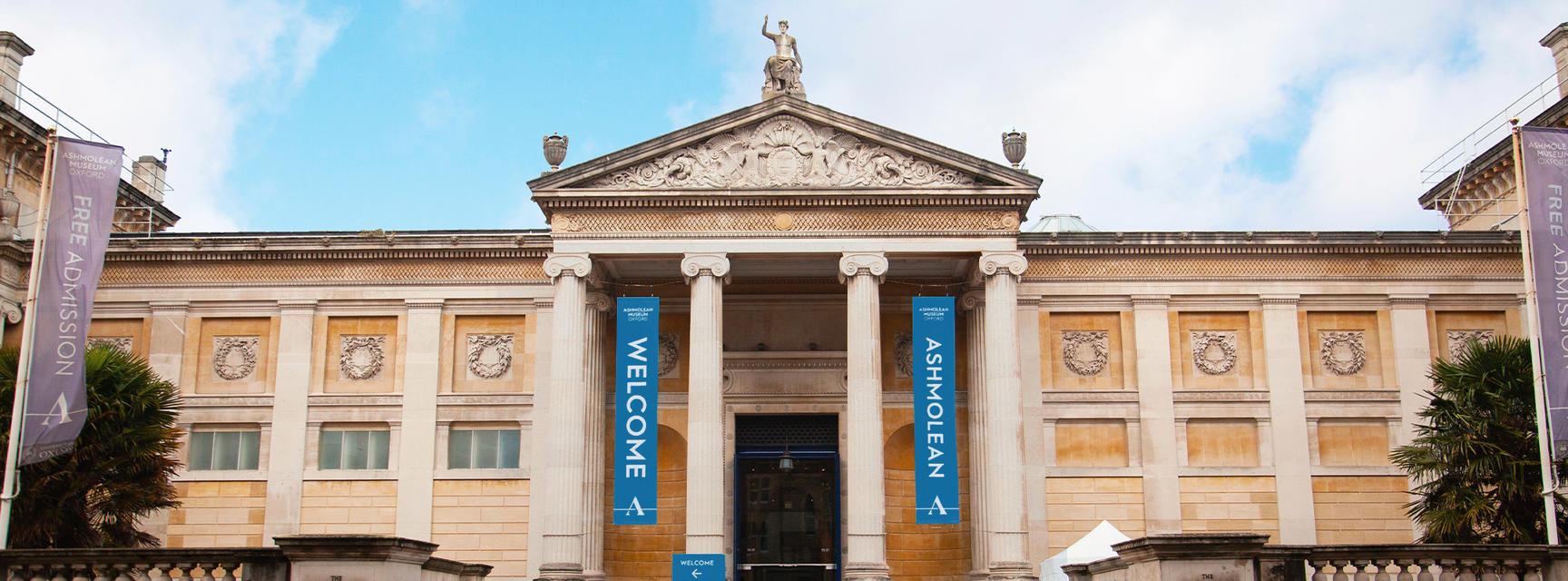
When I think of the Victorians I get visions of Dickensian smoke-clogged cities, widows’ weeds, funeral coaches with black-plumed horses, lots of gloomy tartan and blackened grates.
The fabulous Colour Revolution exhibition aims to explode through all that with a burst of colour and energy – and I reckon it succeeds. I drove over to Oxford before Christmas to catch it after reading rave reviews.
One of the first images I saw on entering the exhibition was Millais’ painting, Mariana.
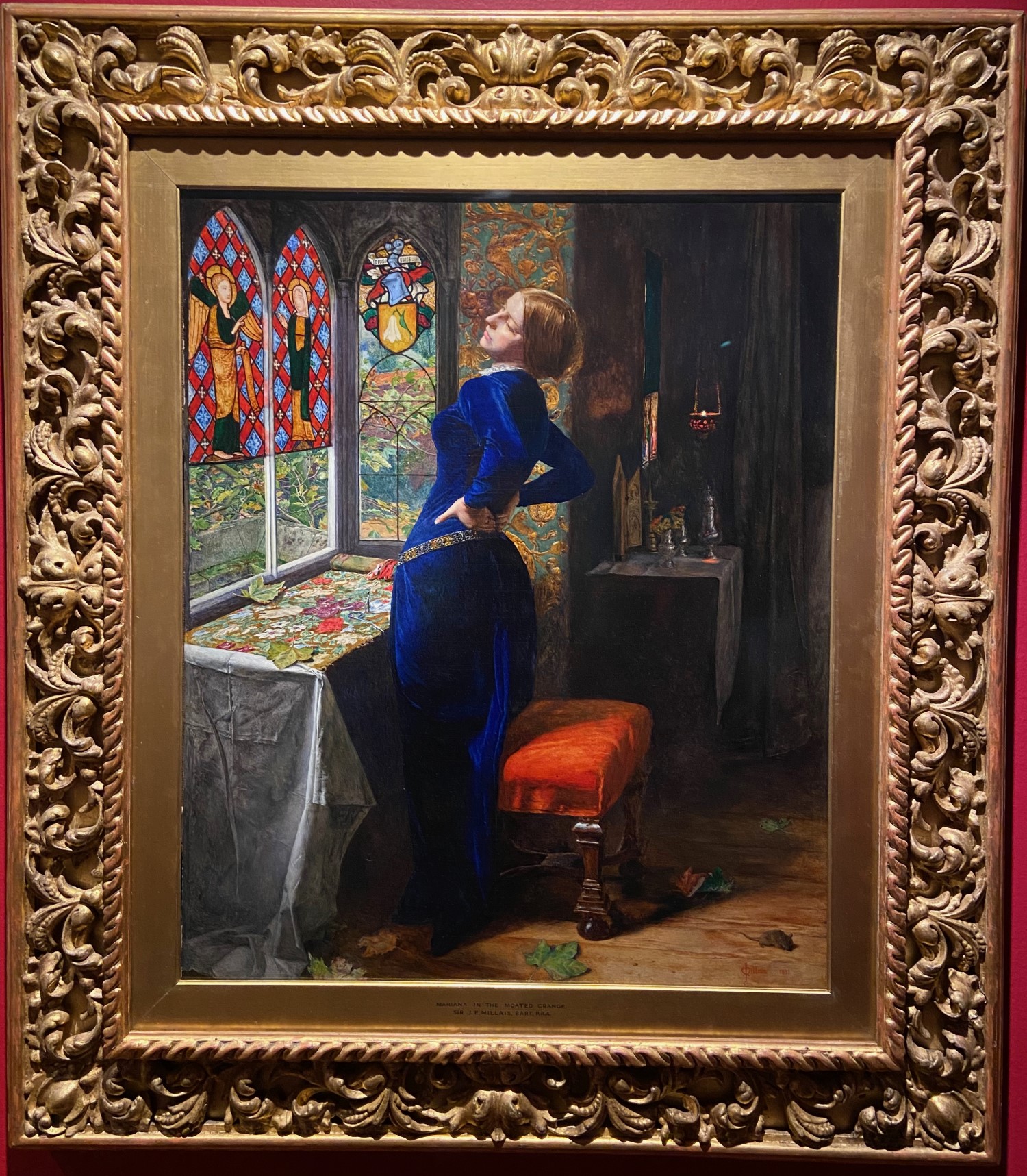
Millais’ Mariana
I immediately identified with the subject, a woman standing, hands at her waist as she bends backwards to stretch, after working on what looks like a piece of embroidery or tapestry. And the clincher for me – she’s in front of a stained-glass window. Apparently the window is based on an actual one in Merton College. The woman is wearing a velvet dress in rich deep blue and has been sitting at a red fabric-covered stool. The colours of the tapestry and the window are vibrant and varied and outside there is a garden full of autumnal trees and leaves. The painting sparkles with colour and life – in spite of the woman’s evident tiredness. As soon as I saw it, I thought of Alice, the central character in my Hearts of Glass series. Alice is actually a stained-glass artist not an embroiderer – but her posture, hands on hips stretching out after back-breaking work was perfect. Alice of course is a few years on from Millais’ Mariana as we meet her first in 1908 and follow her through the First World War.
Another item called to me as I entered the exhibition – a stunning Burne-Jones stained-glass window of an angel with a lute. Rather than the customary white garb, this angel is in scarlet – against a royal blue background.
The exhibits are varied but rich in colour. There are costumes in purple – linked to the discovery of commercial dyes that made colours that had previously been the province of the rich suddenly available to the masses.
There is pottery – including a magnificent majolica peacock made by Minton. The brilliance of the majolica masks a sad story: the paints used contained lead and poisoned the poor paintresses who worked to create them – until the use of lead paint was banned. This heralded a loss of vibrancy in the colours and led to the decline in popularity of majolica.
Colour Revolution doesn’t stick to paintings and sculpture. The Great Bookcase shown here is a huge elaborate piece of furniture – described by some as a monstrosity. Made by William Burges with thirteen young painters, it incorporates both Christian and pagan images in a riot of Medieval-style colour and gilding
Textile samples, bottles of dye, wallpaper, books, feathers, drawings, jewellery – all manner of things are included to dramatize the outpouring of colour during the Victorian period. I was delighted to find a whole showcase full of copies of The Yellow Book, the short-lived illustrated quarterly literary magazine from Bodley Head.
The leitmotif of the exhibition is a painting by Ramon Casas, Decadant Young Woman, After the Dance (1899). This features a young woman recumbent on a chartreuse green couch, clutching a yellow book – not the literary magazine but presumably an example of one of the risqué French novels which bore yellow covers to warn readers of their salacious content.
If you are within striking distance of Oxford, I’d urge you to pay a visit to the Ashmolean and see Colour Revolution. But hurry! It’s finishes on 18th February.
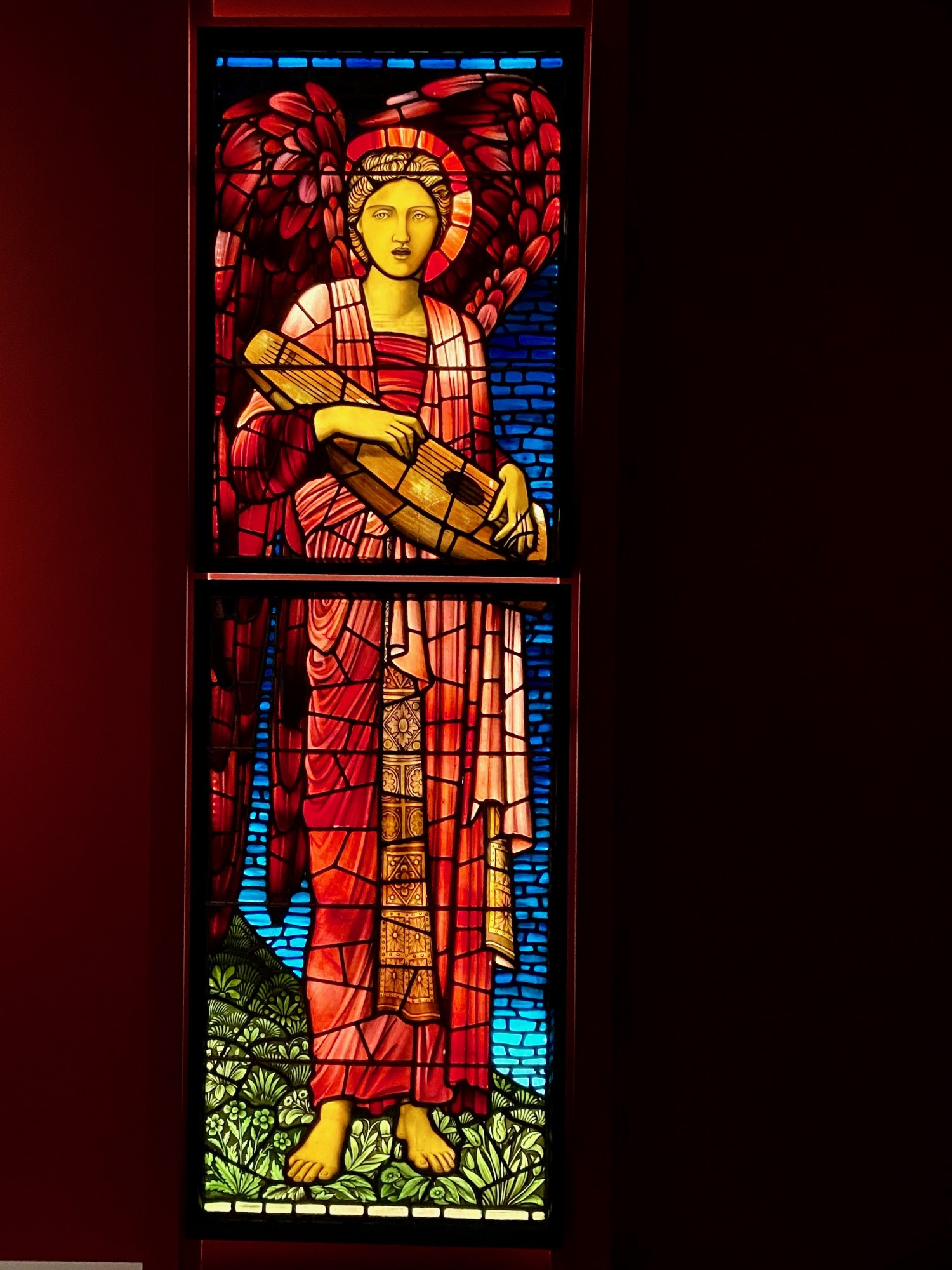
Burne-Jones window

Colourful costumes

Minton peacock

The Great Bookcase
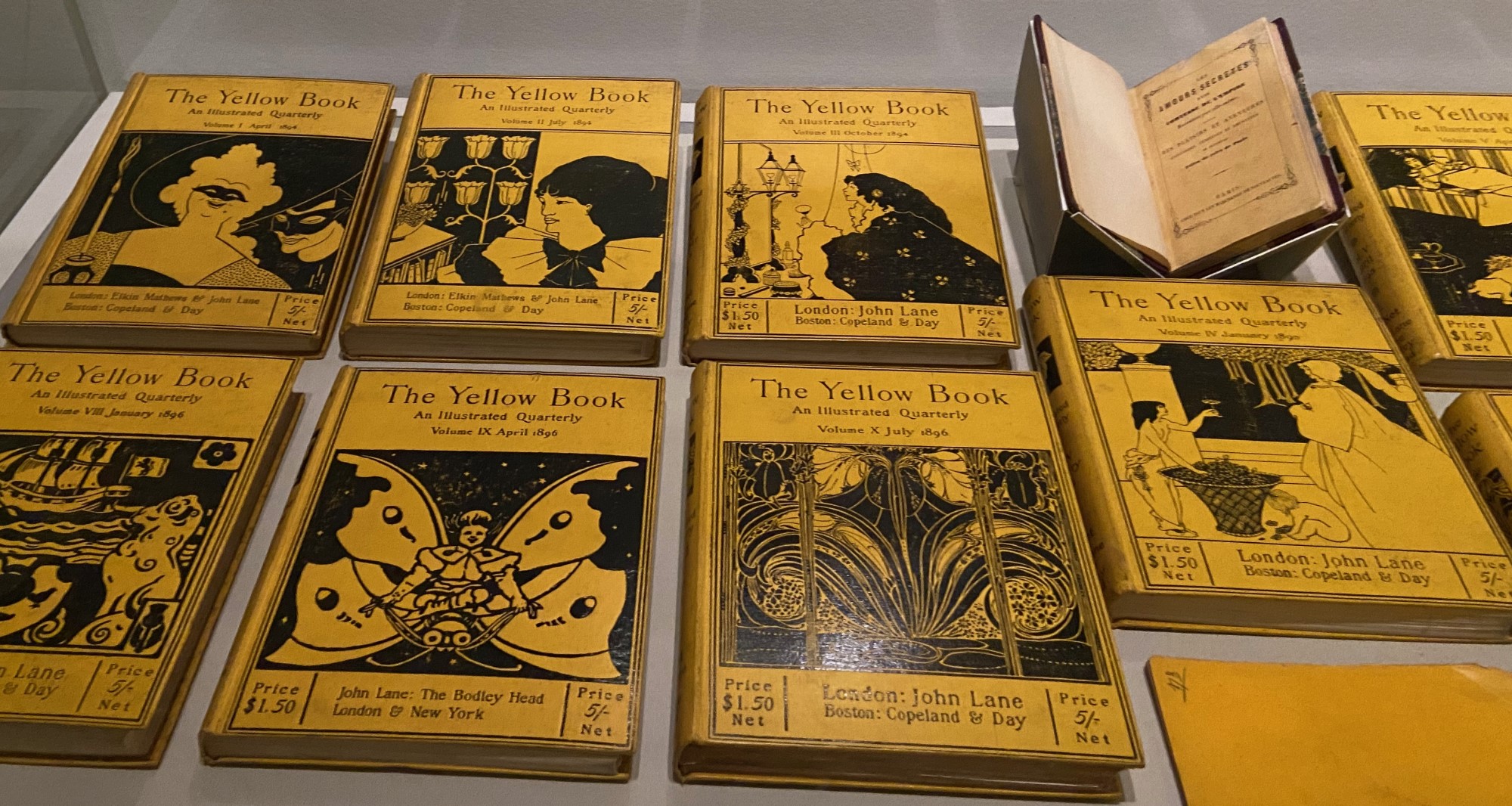
The Yellow Book
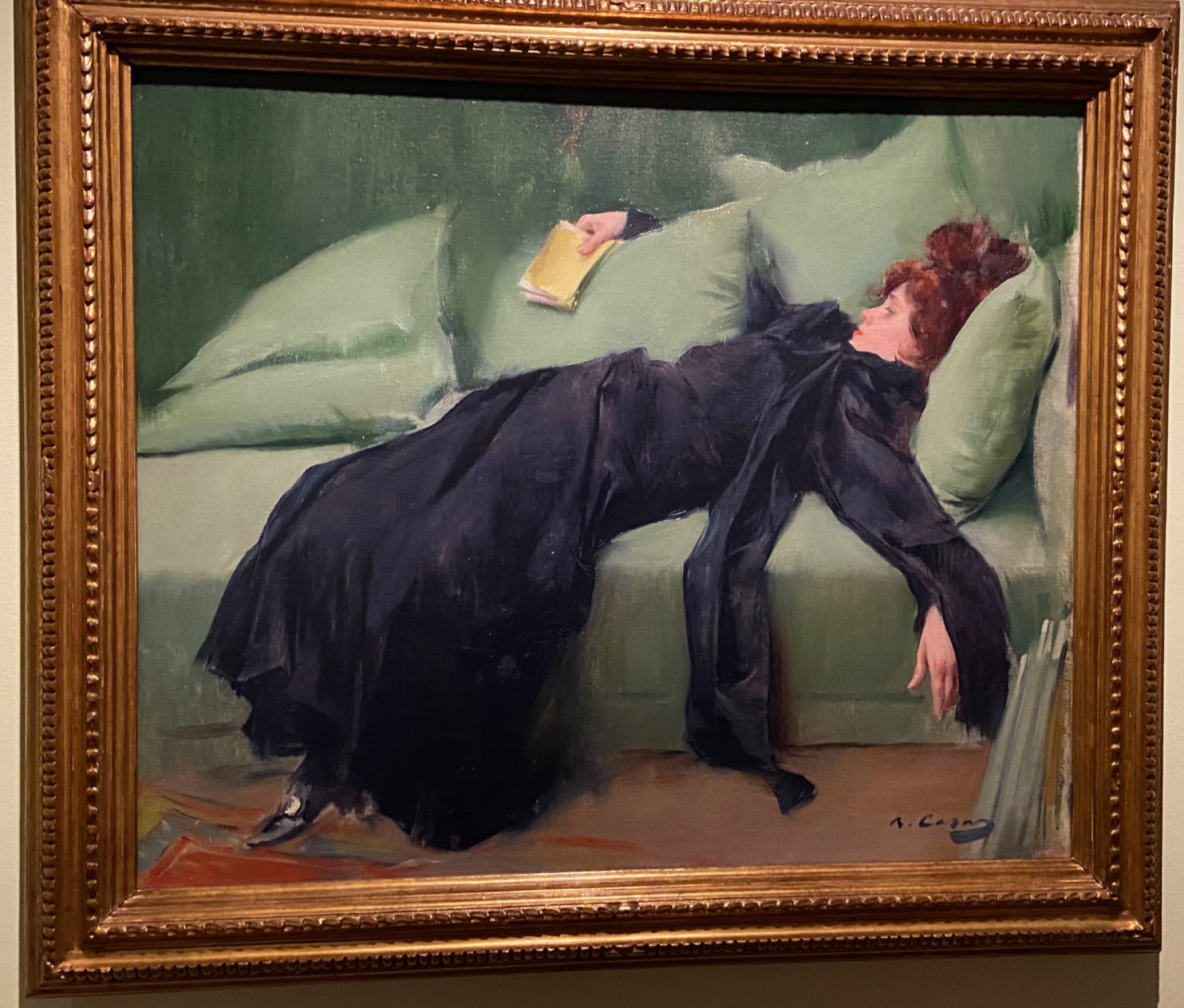
Casas’ After The Dance


0 Comments